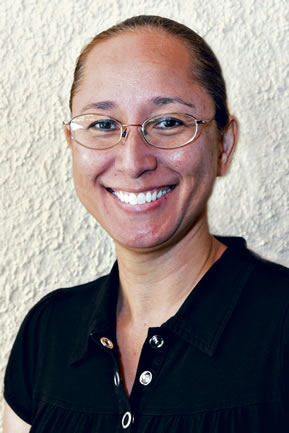Brain Injury Awareness Month
Elzy Kaina
Registered Nurse at Rehabilitation Hospital of the Pacific (REHAB)
Where did you receive your schooling and training?
I have my nursing degree from the University of Hawaii and my certification in rehabilitation nursing through my experience at REHAB.
How long have you been practicing?
I’ve been at REHAB for more than 20 years.
How common is brain injury in Hawaii?
At REHAB hospital, brain injury is one of the specialized populations that we treat in addition to spinal cord injury and stroke. In Hawaii, emergency departments see more than 9,000 patients each year for traumatic brain injury, which includes more than 2,600 children under the age of 14. This number is low and we suspect that many brain injuries go unreported. Either people don’t realize they have sustained an injury or they choose not to get it treated. There is no cure for brain injury, so prevention is key. REHAB is committed to educating the community about injury prevention, and one of the initiatives that we offer to school-aged children is a national program called ThinkFirst.
Can you say something more about ThinkFirst?
ThinkFirst is a national injury prevention program that teaches children safe behaviors to prevent brain and spinal cord injury. REHAB is the lead organization for the ThinkFirst, Hawaii chapter. We are in partnership with the Department of Health and other community agencies interested in injury prevention, such as The Queen’s Medical Center and the Department of Education. Most of the Mainland chapters are normally led by other rehabilitation or trauma hospitals as well.
What safety measures should children and parents take to prevent brain injuries?
ThinkFirst reinforces safe behaviors such as wearing a seat belt, using a booster seat for younger kids, wearing a skateboard helmet or a bicycle helmet. Pedestrian safety is another area we touch on. Water safety is important in Hawaii, so we teach them not to dive into shallow water and to have adult supervision. For sports and recreation, we talk about wearing the right equipment, the right size equipment and following the rules of the sport.
Is there a particular age at which children tend to be more prone to injury?
Unfortunately, some of these injuries come as a result of childbirth. We get families in who have either had a troublesome labour with their child or have been a victim of malpractice in which they had to file a lawsuit through law firms like https://lawtx.com. Their skulls are not fully developed at this age, so they are more prone to brain damage. As kids get older, they engage in different activities that expose them to potential injury. For example, as teens start learning to drive, we include discussions on distracted driving.
Do you treat children with brain injury at REHAB?
Yes, REHAB treats both children and adults with brain injury. When we have a school-aged student with a brain injury, we bring in a liaison with the Department of Education to work with us and the family to coordinate the transition back to school. Oftentimes it’ll include getting the teachers and the school involved so that they understand how the injury has affected this individual student.
Anything else you’d like to add about ThinkFirst?
We try to reinforce safe behaviors by teaching kids when they’re younger. Wearing seat belts, for example, was a habit that took us a long time to adopt because most of us didn’t learn it as children. Whereas when my children get in the car, they automatically put on their seat belt because it’s become second nature for them. If we teach our children and reinforce it throughout their childhood, when they become adults it’s natural for them to put on a helmet or put on a seat belt or to look both ways before crossing the street.
In terms of Brain Injury Awareness Month, we want to continue to educate the community about brain injuries. People don’t realize that children are at high risk for brain injury simply because of the things they do. When we talk about safety for elementary kids, one of the things we often mention is playground safety. For example, when kids are waiting in line we tell them not to push someone off of the sliding board or the monkey bars. Kids roughhouse a lot, but they need to know that there’s a way to play safely. Our brain injury team here at REHAB created an “ABCs of Safety” poster that was distributed this month to different schools and libraries to display as a reminder for kids to be safe.
If you would like a copy of the poster for your child’s school or local library, send an email with your request to marketing@rehabhospital.org.







